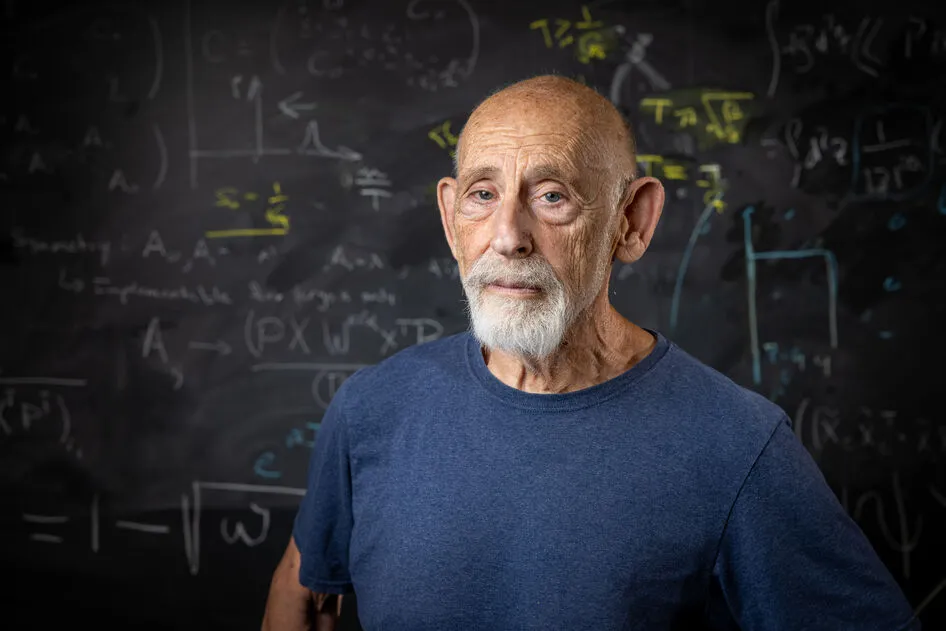Interview with Pierre Sikivie, Professor Emeritus in the Department of Physics at the University of Florida, awarded the INFN Galileo Galilei Medal 2025 for his pioneering contributions in seeking to make the “invisible axion” visible
What are axions?
Axion is a hypothetical particle that has never been observed experimentally but is very well motivated theoretically. It was originally proposed to explain a certain symmetry of strong interactions between particles in the Standard Model, the charge-parity (CP) symmetry. It had not been clear why the strong interactions should possess this property, until it was realised that adding axions to the theoretical framework would automatically give rise to the symmetry. This was the initial motivation for their existence. Only later it was discovered that axions are also excellent candidates for dark matter.
Why are they excellent candidates for dark matter?
We still don’t know what dark matter is, but we do know some properties it must have. First of all, it must not be visible, otherwise we would have already detected it. It must have an extremely long lifetime, since the universe is very old and these particles must survive on cosmic timescales. And finally, it must be “cold”, in the cosmological sense of the term. In the early universe, dark matter particles at a given location moved in random directions. “Cold” means that they did so with only very small velocities (speed is proportional to temperature, so low speed translates into low temperature). The axion naturally satisfies all these conditions, without the need for any adjusting.
Are there any other astronomical phenomena that can be associated with axions?
This is exactly what’s close to my heart, what I’ve been working on. I’ve been making a lot of claims that are not widely accepted, but I believe to be true nonetheless. A central claim is that the axion makes a Bose-Einstein condensate, a state of matter in which a large number of particles behave in exactly the same way because they are all in the same quantum state. This type of condensate has very special properties, one of which is that, when it has angular momentum, it will start to rotate coherently, like a single fluid spinning – think of water and the way it flows down the sink drain. Galaxies also rotate, they have spin, and I think there is a relationship between the origin of galaxy rotation and axions.
When did your interest in axions begin, and how did you come up with the idea of a possible method for detecting them?
I happened to be a postdoc at SLAC (Stanford Linear Accelerator Center) shortly after the axion hypothesis was proposed. It was understood to be a very good idea, but I didn’t know what to do with it. Later, when I became a faculty member, I was teaching electrodynamics and Maxwell’s equations (the equations for electric and magnetic fields), and some issues came up with magnetic monopoles, something called the Witten effect. So, to understand those issues, I wrote down the generalisation of electrodynamics, that includes axions, and found that these neutral particles can convert into photons by interacting with an electromagnetic field. The calculations showed that axions are “invisible”, practically impossible to detect, but I began playing with thought experiments to detect them anyway. I thought of nuclear reactions in the vicinity of a detector, which would obviously blow up itself, but which might, before doing so, be able to detect some axions. Then suddenly it dawned on me: the Sun acts like a huge nuclear reactor and sends millions of billions of axions towards us every moment. I proposed to detect the axions coming from the Sun, in Greek Helios: this is how the helioscope was born.
How does a helioscope work?
A helioscope is an instrument to observe the Sun. The first helioscope was invented by Galileo, who used a telescope to observe the surface of the Sun, looking at its image projected onto a white sheet of paper; it was thanks to this technique that he discovered sunspots. The axion helioscope, on the other hand, does not look at the surface, but at the very centre of the Sun, where axions are generated. Inside the axion helioscope there is a strong magnetic field, in which axions can be converted into X-rays, which are then detected by highly sensitive photon detectors. Several experiments are based on this idea, such as CERN’s CAST (CERN Axion Solar Telescope). It is an idea that actually works; and although axions have not yet been detected, important constraints on their properties have been obtained. The same principle of axion-to-photon conversion in a magnetic field is then used in another instrument, the haloscope, which doesn’t search for axions from the Sun, but for dark matter axions. The name, from the English word halo, refers to the halo of dark matter that, according to astronomical observations, surrounds our galaxy.
How do the two instruments differ?
Since it does not search for axions coming from the Sun, the haloscope does not point towards the Sun. It is instead a cavity. More precisely, it is an electromagnetic cavity (like a copper box) in which there is a strong magnetic field that converts dark matter axions into microwave photons. Inside the cavity, there are different modes of oscillation of the electromagnetic field that resonate at specific frequencies, similar to the modes of oscillation of a drum. The axion field, as it oscillates, excites a mode of the cavity – if it is tuned to the right frequency – and deposits a power of the order of 10⁻²² watts, like a tiny light bulb divided by ten thousand billion. It is an extremely small power, yet detectable today. Over time, the sensitivity of the instrument has been improved, going from thousands of photons detected per second to a few per second, and we are still pushing in this direction, towards ultra-sensitive photon detectors.
What are the most promising technologies today for the search for axions?
Two things are needed to search for axions: a large-volume strong magnetic field and a receiver that is extremely sensitive to the photons produced in the axion-photon conversion. Continual progress is being made in both directions. Some technologies from quantum computing, in particular, allow the detection of very weak signals and are being used to improve the performance of axion haloscopes.
What can we expect for the future?
I am pretty confident that axions constitute at least part of dark matter, if not all of it. And I also think they will be detected, but I don’t know the timescale. The experiments are challenging because the mass of axions is not yet known. Some mass ranges have been explored without finding anything, but these were the easiest to probe. Now we would like to explore ranges of higher and lower masses; and to be honest, I have some expectations that the right range will be that of the lower masses, because of the issues related to the rotation of galaxies. In any case, I think that sooner or later it will be recognised that axions are not like other dark matter candidates, that they have special properties. And when dark matter axions are detected, we will be able to accurately measure their velocity distribution here on Earth and understand how they move throughout the entire galactic halo.
BIO
Pierre Sikivie is Distinguished Professor Emeritus in the Department of Physics at the University of Florida. Born in Belgium, he earned his PhD at Yale University and worked at the University of Maryland, SLAC and CERN before moving to Florida. In 1994, Sikivie was elected a Fellow of the American Physical Society and he is the 2020 recipient of the J. J. Sakurai Prize and the 2025 recipient of the INFN Galileo Galilei Medal.






